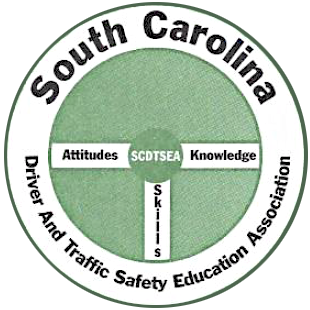Traffic Safety Needs for South Carolina
The recent texting law is a step in the right direction, but it could be stronger. For example, our fine for the first offence of texting ($25) is the cheapest except for California ($20). The average fine for other states is $165, although Alaska was not averaged since the fine there is $10,000! Forty-four states, including SC, have a primary texting law for all drivers. However, some states have points added to a fine (it is 5 points in New York). In some states texting can result in misdemeanor charges and if bodily injury is done, some states give jail or prison time. More study is needed to make the SC texting law better.
The National Conference of State Legislatures mentioned that no state bans all cell phone use for all drivers, but 37 states and D.C. ban all cell phone use by novice drivers. Teens may be blamed too much as studies find adults distractions were not any better (Texting While Driving Opposing Viewpoints Online Collection). In this regard, parents need to take the hazards of texting and other distractions seriously when THEY drive; and responsibly helping their children develop safe driving attitudes. This is what drives a person's behavior for safety! The Insurance Institute of Highway Safety noted that 13 states and D.C. ban hand-held cell phones for everyone. More study also needs to go into this—more than ten million drivers in the U.S. are using cell phones (National Highway Traffic Safety Administration).
Another needed concern to help keep South Carolinians safe for years to come relates to Senator Massey's Bill S 849 for all teenagers and up to 21 having to take driver education and/or driver training (perhaps 19 would be more ideal). Some facts that mandates better driver education for teenagers: one in three young people crashes in the first six months after they get a license and the fatality rate for drivers age 16-19 is four times that of drivers age 25-69. Vehicle crashes are the leading cause of teen fatalities and about 44 percent of all teen deaths in 2003 were attributed to vehicle crashes. If such statistics aren't bad enough, surveys indicate that less than 50 percent of new teenage drivers receive any formal driver education/training prior to receiving their license. At this time, only teens up to 16 have to take driver education or driver training in South Carolina. Nationwide, over 2,000 teenagers didn't make graduation because of highway crashes (2,823 died in 2012 according to the Insurance Institute of Highway Safety).
Teenagers that take driver education and/or driver training should have the same standardized course for quality education throughout South Carolina. High school driver education and commercial driver training are under two agencies and the teacher preparation and student classroom teaching times are not the same. Driver Education is no longer mandatory curriculum in public high schools. Better drivers make highways safer. Work must be done to stop highway crashes being the number one killer of teenagers.
Another safety concern in South Carolina is that there is a loophole in making liability insurance mandatory for all South Carolina drivers. The uninsured motorist clause in the South Carolina Drivers Manual reveals this.
The ultimate safety is of the Lord (Proverbs 21:31; 29:25), but we need to be involved to “Make Safety First and Make It Last” (motto of Travelers Protective Association). President Warren S. Hastings mentioned that “we are all building traffic bridges for young people to keep their blood off of the highways. Give of your best to the cause.”
Southern Bell's lofty goals for their drivers:
- Only he can be safe who knows safety
- Only he knows safety who thinks safety
- Only he thinks safety who believes in safety
- Only he who takes time to be safe is safe
Joe Sabbadino

